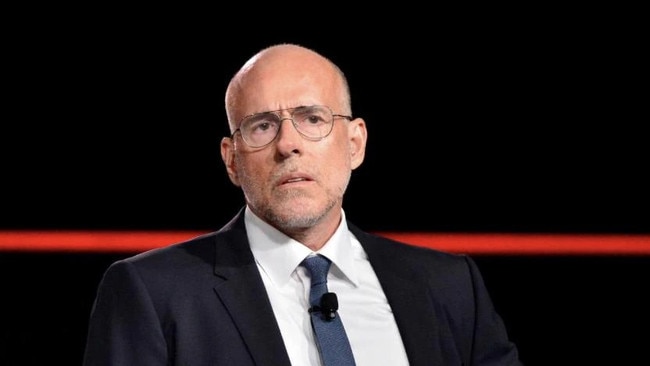Ozempic to ‘impact stock market more than AI’
The long-term impacts of Ozempic on food, drink and QSR brands will have a bigger impact on the stock market than AI, according to provocative marketing commentator Scott Galloway.

Ozempic and similar GLP-1 medications for diabetes and obesity are set to dramatically transform the market as the drug’s flow-on effects impact food, drinks, quick-service restaurant brands and beyond, New York University marketing professor, best-selling author and podcaster Scott Galloway says.
Speaking in Sydney last week at the ADMA Global Forum, Mr Galloway predicted the GLP-1 agonists would have a more significant impact on the market than artificial intelligence, “in terms of where market capitalisation flows to and from over the next 24 months”.
“I think this technology is a game-changer,” he told the audience of marketing professionals via a video link from the US.
“We have a global pandemic that kills more people than Covid every year, and it’s called obesity. It kills almost twice as many people as road accidents. And in the US, it’s absolutely out of control; 70 per cent of Americans are either obese or overweight. We don’t talk about it because there’s a lot of money involved. Specifically, some of the most iconic American companies are no longer really companies, they are selling obesity and disease.”
Mr Galloway, who is a professor of marketing at NYU’s Stern School of Business and has served on the board of directors of The New York Times Company, Berkeley’s Haas School of Business, Panera Bread, and Ledger, is renowned for his predictions and provocative insights into market and technology trends.
He pointed to the rise of obesity globally, and suggested the stocks of food, drinks and quick-service restaurant businesses, as well as hospitals and healthcare companies involved in the treatment of the diabetes and obesity epidemics could soon feel the impact of GLP-1 drugs.
He said the GLP-1 drugs posed a significant risk to these businesses due to the medications’ ability to locate and switch off the signals that fuelled addiction. He claimed 77 per cent of people on Ozempic visited fast-food restaurants less often, and 70 per cent consumed less sugary drinks. Alcohol intake also reduced, he said, with the average Ozempic user consuming 62 per cent less alcohol, and of those people, 20 per cent cut out alcohol entirely. There was also a “dramatic” increase in purchases of lean protein and healthy snack products, Mr Galloway said.
“I think it’s going to rock the stock market,” he said.
“I would not want to be in the drinks business, the quick-service food business, the sugary, salty, fatty businesses. I would not want to be a kidney dialysis business, a hospital complex that pretends to be caring for the sick, and really what they’re doing is replacing knees and hips and treating people with diabetes.
“I think this is going to dramatically reshape [the market]. Everyone’s talking about AI, but I think this is going to be a bigger meteor in terms of where market capitalisation flows to and from over the next 24 months.”
Mr Galloway’s comments come as the Australian government faces pressure to curb the rise of diabetes in Australia; there are 1.5 million Australians diagnosed with type 2 diabetes, and the disease costs the country $3.4bn a year. A recent parliamentary health committee report not only recommended expanding the eligibility criteria for GLP-1 drugs, and securing supplies for high-risk patients, it also suggested the introduction of a sugar tax, packaging reforms and regulations for marketing and advertising.
It is the latest government initiative to recommend regulation on food and drink marketing, with the National Preventive Health Strategy 2021–2030, National Obesity Strategy 2022–2032 and the National Diabetes Strategy 2021–2030 all recommending greater restrictions of advertising as a policy goal.
The market is currently waiting on the final outcome of the government feasibility report on limiting the marketing and advertising of unhealthy food to children, which was originally slated to be finalised in the first half of 2024. However, a representative for the Department of Health and Aged Care told The Growth Agenda: “The feasibility study on limiting unhealthy food marketing to children was extended to ensure appropriate public consultation processes”. This is now expected “later in the year”.
However, with the government appearing to soften its stance on gambling advertising reform, there are concerns among marketers that food and drink marketing could be a sacrificial lamb in the lead-up to the next election.
The Australian Association of National Advertisers chief executive officer Josh Faulks told The Growth Agenda that it had provided responses to the feasibility study. He said the AANA maintained that The Food & Beverage Advertising Code “meets or exceeds nearly all the relevant advertising recommendations of the recent Diabetes inquiry”.
“Australia (in contrast to the US) has some of the strictest rules in the world around food and beverage advertising, with very high levels of compliance,” Mr Faulks said.
“These rules effectively ban advertising of unhealthy food to children and are designed to encourage the promotion of healthy eating.
“The industry is also taking action to support the government’s preventative health initiatives designed to tackle obesity through reformulation of products to reduce sodium, fat and sugar.”



To join the conversation, please log in. Don't have an account? Register
Join the conversation, you are commenting as Logout